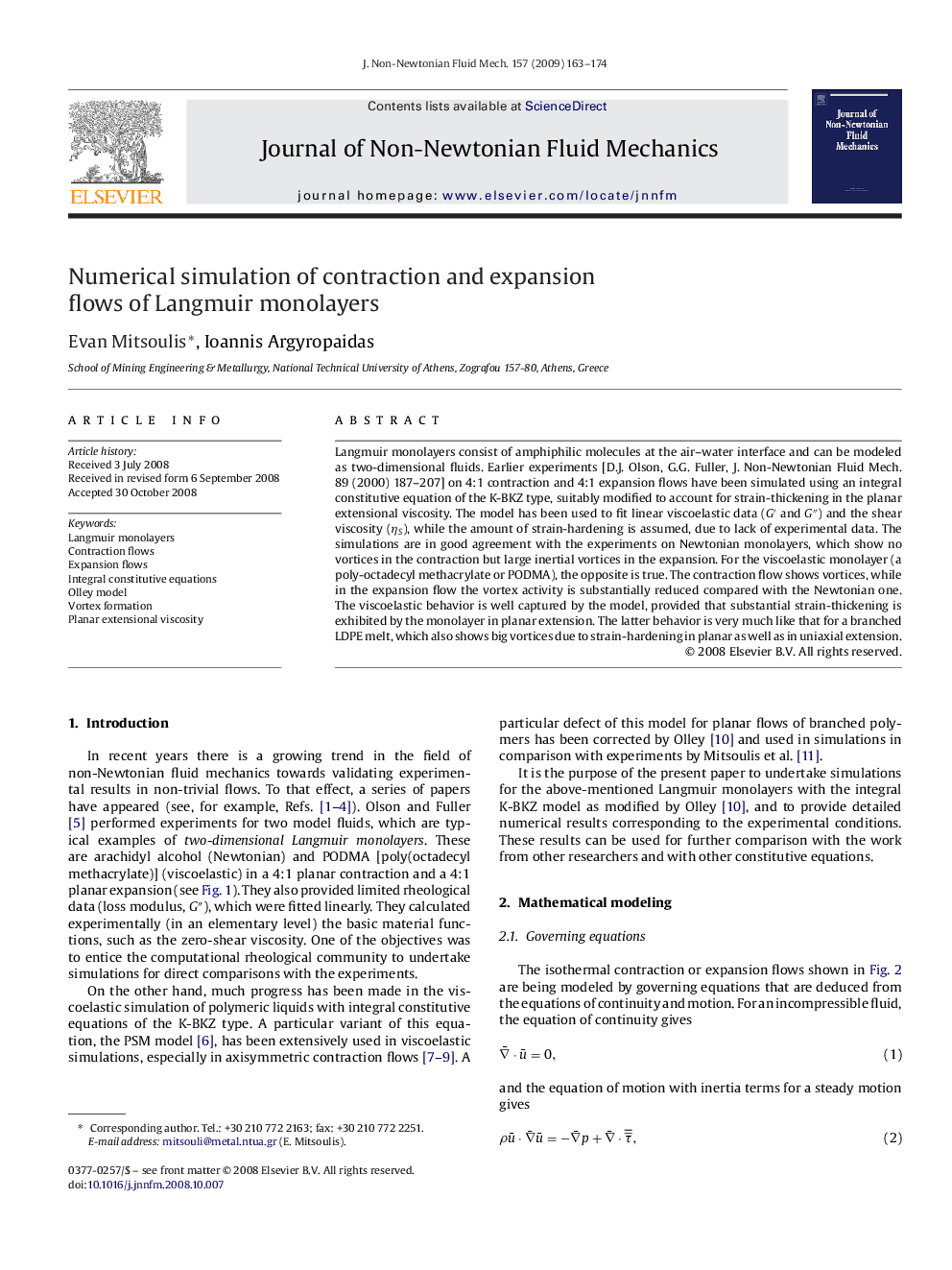| Article ID | Journal | Published Year | Pages | File Type |
|---|---|---|---|---|
| 671125 | Journal of Non-Newtonian Fluid Mechanics | 2009 | 12 Pages |
Abstract
Langmuir monolayers consist of amphiphilic molecules at the air-water interface and can be modeled as two-dimensional fluids. Earlier experiments [D.J. Olson, G.G. Fuller, J. Non-Newtonian Fluid Mech. 89 (2000) 187-207] on 4:1 contraction and 4:1 expansion flows have been simulated using an integral constitutive equation of the K-BKZ type, suitably modified to account for strain-thickening in the planar extensional viscosity. The model has been used to fit linear viscoelastic data (Gâ² and Gâ³) and the shear viscosity (ηS), while the amount of strain-hardening is assumed, due to lack of experimental data. The simulations are in good agreement with the experiments on Newtonian monolayers, which show no vortices in the contraction but large inertial vortices in the expansion. For the viscoelastic monolayer (a poly-octadecyl methacrylate or PODMA), the opposite is true. The contraction flow shows vortices, while in the expansion flow the vortex activity is substantially reduced compared with the Newtonian one. The viscoelastic behavior is well captured by the model, provided that substantial strain-thickening is exhibited by the monolayer in planar extension. The latter behavior is very much like that for a branched LDPE melt, which also shows big vortices due to strain-hardening in planar as well as in uniaxial extension.
Keywords
Related Topics
Physical Sciences and Engineering
Chemical Engineering
Fluid Flow and Transfer Processes
Authors
Evan Mitsoulis, Ioannis Argyropaidas,
